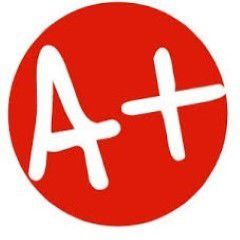Homework 5 Complete Solution 1
X = ABC + BCD is in the form of minterms expression.
Question 1 options:
|
True |
|
|
False |
Save
Wich of the following sum of products represents the given truth table?
Question 2 options:
|
|||
|
|||
|
|||
|
Save
The minterm expression for the function g(A,B,C) given:
g(A,B,C)=A'B + AB' + AC
Question 3 options:
|
|||
|
|||
|
|||
|
Save
The maxterm expression for the function g(A,B,C) given:
g(A,B,C)=A'B + AB' + AC
Question 4 options:
|
|||
|
|||
|
|||
|
Save
For the function:
f(A,B,C,D) = A'BCD+ A'B + ACD'+ BC
What would be the canonical sum of products expansion?
Question 5 options:
|
|||
|
|||
|
|||
|
Save
The waveforms are correct for the logic circuit shown above.
Question 6 options:
|
True |
|
|
False |
Save
For circuit shown, which option gives the equivalent, minimal circuit?
Note, the bubble shown in the input B to the lower AND gate in the option a is equivalent to an inverter.
Question 7 options:
|
||||
|
||||
|
||||
|
||||
|
|
||||
|
Derive the expression of the circuit as a sum of products, map into a Karnaugh Map, minimize and apply De Morgans |
||||
Save
Using Boolean algebra to simplify the expression Z = AB + A(B + C) + B(B + C), the completed first step would result in the expression:
Question 8 options:
|
Z = AB + ABAC + BB + BC |
|
|
Z = AB + AB + C + BB + C |
|
|
Z = AA + AB + AB + AC + BB + BC |
|
|
Z = AB + AB + AC + BB + BC |
Save
Using Boolean algebra, the complete simplification of Z = AB + A(B + C) + B(B + C) gives us:
Question 9 options:
|
Z = AB + AC + B |
|
|
Z = B + AC |
|
|
Z = AB = AC = BC |
|
|
Z = AB + AC + B + BC |
Save
Using Boolean algebra, the expression given for Y = above simplifies to:
Question 10 options:
|
Y = BC + A'B'C + AB'C |
|
|
Y = BC + B'C |
|
|
Y = C |
|
|
Y = BC +BC' + A' |
Save
The implementation of simplified sum-of-products expressions may be easily implemented into actual logic circuits using all ________ with little or no increase in circuit complexity.
Question 11 options:
|
OR gates |
|
|
AND gates |
|
|
NAND gates |
|
|
multiple-input inverters |
Save
Table 4-1
The truth table in Table 4-1 indicates that:
Question 12 options:
|
The output (Z) is HIGH only when a single input is HIGH. |
|
|
The output (Z) is HIGH only when the majority of the inputs are HIGH. |
|
|
The output (Z) is HIGH only when the binary input count is an even number greater than zero. |
|
|
The output (Z) is HIGH only when the binary input count is an odd number. |
Save
Table 4-1
The circuit implementation of the sum-of-products expression for Table 4-1 would require (without minimizing):
Question 13 options:
|
Three 3-input OR gates, one 2-input AND gate, and five inverters |
|
|
Three 3-input AND gates, two 3-input OR gates, and five inverters |
|
|
One 3-input OR gate, two 3-input AND gates, and five inverters |
|
|
Three 3-input AND gates, one 3-input OR gate, and three inverters |
Save
Table 4-1
Circuit implementation of the simplified expression for Table 4-1 will require (as a minimum):
Question 14 options:
|
Two 2-input AND gates, two 2-input OR gates, and two inverters. |
|
|
Two 2-input AND gates, one 2-input OR gate, and one inverter. |
|
|
One 2-input AND gate, two 2-input OR gates, and two inverters. |
|
|
Three 2-input AND gates, two 2-input OR gates, and two inverters. |
Save
A logic circuit allows a signal (A) to pass to the output without inversion when either (but not both) of the control signals (B1 and B2) are HIGH. Which of the following option is the output expression for this circuit?
Question 15 options:
|
Option a) |
|
|
Option b) |
|
|
Option c) |
|
|
Option d) |
Save
The logic gates required to implement the logic circuit in the preceding question would be:
Question 16 options:
|
an Exclusive NOR gate with inputs B1 and B2 whose output is fed, along with input A, to an AND gate. |
|
|
an Exclusive NOR gate with inputs B1 and B2 whose output is fed, along with input A, to an OR gate. |
|
|
an Exclusive OR gate with inputs B1 and B2 whose output, is fed along with input A, to an AND gate. |
|
|
an Exclusive OR gate with inputs B1 and B2 whose output is fed, along with input A, to an OR gate. |
Save
Which of the following is the simplest form of the expression Y = ABC[AB + C(BC + AC)]?
Question 17 options:
|
Y = ABC + BC |
|
|
Y = BC |
|
|
Y = AC + BC |
|
|
V = ABC |
Save
Simplifying logic circuits results in:
Question 18 options:
|
fewer potential faults. |
|
|
fewer connections. |
|
|
fewer gates. |
|
|
all of the above |
Save
![]()
Given F1 = Σ m(0, 4, 5, 6) and F2 = Σ m(0, 3, 4, 6, 7) the minterm expression for F1 + F2 is:
Question 19 options:
|
F1 + F2 = Σ m(0, 3, 4, 5, 6, 7) |
|
|
F1 + F2 = Σ m(0, 6) |
|
|
F1 + F2 = Σ m(1, 2) |
|
|
None of the above |
Save
Given F1 = Π M(0, 4, 5, 6) and F2 = Π M(0, 4, 7) the maxterm expression for F1 + F2 is:
Question 20 options:
|
F1 + F2 = Π M(0, 4, 5, 6, 7) |
|
|
F1 + F2 = Π M(1, 2, 3) |
|
|
F1 + F2 = Π M(0, 4) |
|
|
None of the above |
Save
A switching circuit has four inputs as shown. A and B represent the first and second bit of a binary number N1 and C andD represent the first and second bit of binary number N2. The output is to be 1 only if the product N1xN2 is less than or equal to 2. The minterm expansion of F is:
Question 21 options:
|
F=∑m(0,1,2) |
|
|
F=∑m(0,1,2,3,4) |
|
|
F=∑m(0,1,2,3,4,5,6,8,9,12) |
|
|
None of the above |
Save
A bank vault has three locks with a different key for each lock. Each key is owned by a different person. To open the door, at least two people must insert their keys into the assignated lock. The signals A, B and C are 1 if there is a key inserted into lock 1, 2 or 3 respectively. The equation for the variable Z which is 1 iff the door should open is:
Question 22 options:
|
Z=AB + AC + BC |
|
|
Z=ABC |
|
|
Z=A + B + C |
|
|
None of the above |
Save
A logic circuit realizing the function f has four inputs A, B, C and D. The three inputs A, B, C are the binary representation of the digits 0 through 7 with A being the most-significant bit. The input D is an odd-parity bit, ie the value of D is such that A, B, C and D allways contain an odd number of 1's. (For example, the digit 1 is represented by ABC = 001 and D = 0 and the digit 3 is represented by ABCD = 0111.) The function f has value 1 if the input digit is a prime number. (A number is prime if it divisible only by itself and 1; 2 is considered to be prime but 0 and 1 are not)
A list of the minterms and don't care minterms of f is :
Question 23 options:
|
f = ∑m(4,7,11,14) + d(0,3,5,6,9,10,12,15) |
|||
|
f = ∑m(2,3,5,7) + d(0,1,4,6,8,9,10,11,12,14,15) |
|||
|
f = ∑m(2,3,5,7,11,13) + d(0,1,2,4,6,8,9,10,12,14,15) |
|||
|
None of the above |
|||
|
|
|||
|
Build the truth table for f(A,B,C,D) following the specifications given above. Observe that some of the rows of the truth table cannot hold realistic parameters and will never occurr and therefore should be assigned as don't care |
|||
Homework 5 Complete Solution 1
Option cf(A,B,C,D)= A'BC'D'+A&...






Vikas
Senior JournalistSell Your Solution Report Solution Support Center
Online Users
-
 Vikas
Today
Vikas
Today


A+ - Thank you!
Thanks for the positive feedback!